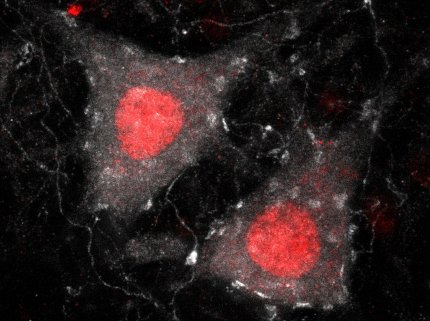Silencing a Faulty Gene May Uncover Clues to Rare Forms of ALS

Using an experimental drug, researchers suppressed a mutated amyotrophic lateral sclerosis (ALS) gene. Studies in mice demonstrate the therapy shows potential in treating rare, aggressive forms of ALS caused by mutations in the fused in sarcoma (FUS) gene.
The study, funded in part by NINDS, was published in Nature Medicine.
“The study models how promising gene-targeting therapies can move expeditiously from pre-clinical development to clinical testing,” said Dr. Amelie Gubitz, NINDS program director.
ALS, also known as Lou Gehrig’s disease, is a fatal neurological disorder that causes the degeneration of motor neurons in the brain and spinal cord. Most cases of ALS are sporadic, but at least 10 percent of cases are due to gene mutations. Severe forms of ALS, including a rare type that begins in adolescence or young adulthood, are caused by mutations in the gene FUS.
In the study, Dr. Neil Shneider of Columbia University and his team delayed the onset of motor neuron degeneration in mice by using an antisense oligonucleotide drug designed to silence FUS by blocking cells from making specific proteins. Following encouraging results, they administered the drug to a human patient with ALS.
In mice, injecting a single dose of the drug into the ventricles, fluid-filled spaces surrounding the brain, delayed the onset of inflammation and motor neuron degeneration by 6 months. The drug also knocked down levels of FUS by 50 to 80 percent in the brain and spinal cord.
Under a compassionate-use protocol reviewed by FDA, Shneider administered the drug to a patient, who received repeated infusions into her spinal canal for 10 months. During the treatment, the patient’s rate of motor function deterioration slowed and there were no adverse effects.
Treatment began more than 6 months after clinical onset, by which time the disease had already significantly advanced. The disease progressed rapidly, and the patient died from complications of the disease.
By studying the patient’s brain and spinal cord tissue, researchers found the drug had silenced FUS throughout the nervous system. By targeting the faulty gene in a way that suppresses toxic FUS activity, gene-silencing products like the antisense oligonucleotide drug could potentially reduce or prevent disease progression.
